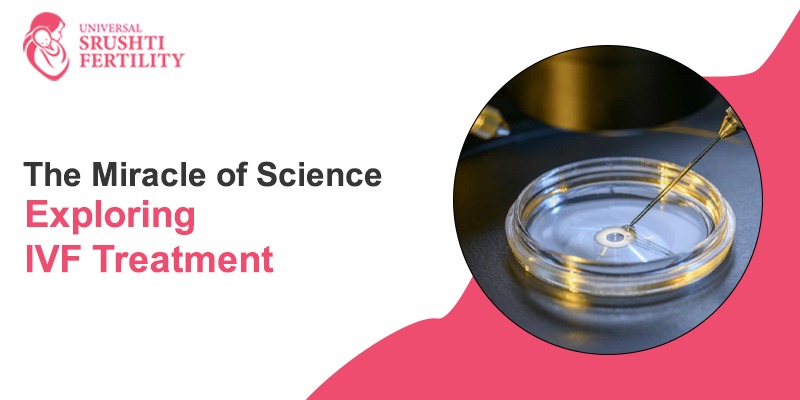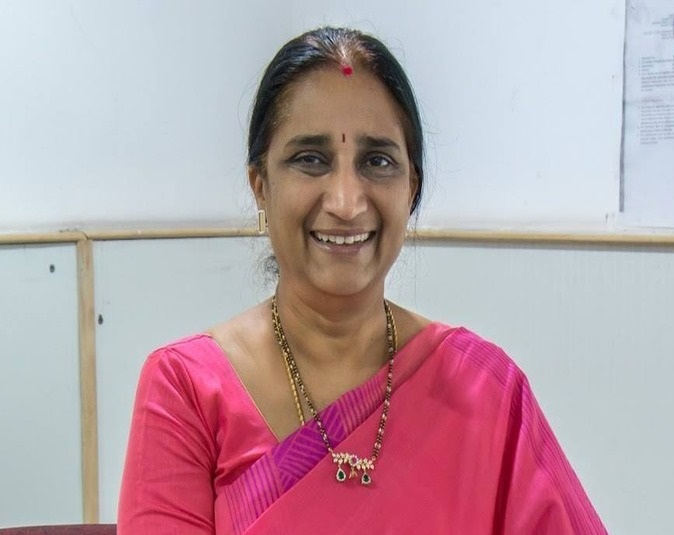“The Miracle of Science: Exploring IVF Treatment”
When struggling with infertility, the idea of starting a family can feel like impossible challenge. Luckily, advancements in reproductive medicine have given couples hope through many assisted reproductive techniques. In Vitro Fertilization (IVF) is one among those. If you get the IVF treatment done at best IVF center near me Secunderabad, Hyderabad, Your chances of getting success increases many folds. In this blog post, we’ll explore the miracle of science behind IVF treatment and how it’s fulfilling the dream of parenthood for numerous childless couples.
Best Fertility center near me Secunderabad, Hyderabad
How to Find the Best Fertility center near me for IVF treatment?
When searching for the best the Best Fertility center near me Secunderabad, Hyderabad, there are a few things to keep in mind. Firstly, look for a center that has a good track record of success. Check for patient reviews and success rates published on the center’s website. Secondly, ensure that the center has a well-equipped lab with the latest technology. Finally, consider the experience of the doctors and staff, and their willingness to answer your questions and provide personalized care. Universal Shrushti fertility is one of the best fertility clinic in Hyderabad. The doctors here have 25+ years of experience with the proven track record of successful IVF cycle.
How IVF Works
The process known as in vitro fertilization, sometimes known simply as IVF, is a kind of assisted reproductive technology (ART) that involves mixing sperm and eggs in a laboratory dish rather than within the body. After that, the embryos that were created are placed inside of the uterus.
The following is an outline of the process of in vitro fertilization (IVF):
Ovarian Stimulation: The patient will take medicine that will stimulate her ovaries to create several eggs, rather than the one egg that is normally produced during each menstrual cycle. The goal is to improve the likelihood of getting numerous embryos that have a chance of survival.
Egg Retrieval: Following about two weeks of ovarian stimulation, the eggs are extracted from the woman’s ovaries using a transvaginal ultrasound-guided needle aspiration process. Eggs are retrieved from the ovaries of the woman using this method. Sedation is often used in order to carry out this surgery.
Fertilization: After the eggs have been collected, they are placed in a laboratory dish where they are fertilized with the sperm. Either the standard in vitro fertilization (IVF) approach or the intracytoplasmic sperm injection (ICSI) method, which involves injecting a single sperm directly into the egg, may be used to fertilize an egg.
Embryo Culture: When the fertilized eggs have been allowed to grow into embryos, the embryos are then removed from the culture dish and placed back into the incubator.
During the embryo transfer procedure, the fully formed embryos are placed into the uterus of the mother. With this treatment, a tiny catheter is introduced into the cervix in order to execute the surgery.
A pregnancy test is administered to the woman around two weeks following the embryo transfer to evaluate whether or not the in vitro fertilization (IVF) operation was successful.
The success rates of in vitro fertilization (IVF) might vary based on a variety of variables, including age, the underlying reason of infertility, and the patient’s current state of health. IVF can be a difficult and emotionally taxing procedure.
Who Can Benefit from IVF
In vitro fertilization (IVF) is a treatment option that could be suggested to people or couples who are battling infertility or another fertility-related illness. IVF is mainly for women infertility issues like blocked fallopian tubes. The following are some instances of individuals who may benefit from in vitro fertilization:
IVF is a treatment option for women who have problems with their fallopian tubes, such as blockage or injury, since it permits fertilization to take place outside of the body, in a laboratory setting.
In situations when the male partner has reproductive concerns, such as a low sperm count or poor sperm motility, in vitro fertilization using intracytoplasmic sperm injection (ICSI) may be used to directly inject a single sperm into the egg for the purpose of fertilization.
IVF may be helpful for couples who have unexplained infertility since it can be used in situations when no particular reproductive problem has been diagnosed but yet no pregnancy has taken place.
Women who have issues with their menstrual cycles or ovulation may find that in vitro fertilization (IVF) combined with ovarian stimulation to create multiple eggs is beneficial for them.
IVF is an option for same-sex couples who wish to have biological children and want to have children of their own. Surrogates are able to bear pregnancies when one of the partners is unable to provide their eggs or sperm, or when both partners are unable to do so.
IVF with preimplantation genetic testing (PGT) can help reduce the risk of passing on genetic disorders to the child of individuals who have genetic disorders. This is accomplished by screening embryos for genetic abnormalities before they are implanted. Individuals who have genetic disorders can benefit from this.
It is essential to keep in mind that in vitro fertilization (IVF) may not be the most suitable choice for everyone; other reproductive treatments could be suggested instead, depending on the specifics of each case. It is recommended that a fertility expert be consulted in order to select the treatment strategy that is most suited.
The Success Rates of IVF
The success rates of IVF can vary depending on a number of factors, such as age and the underlying cause of infertility. However, the success rates have been steadily increasing over the years, with many couples experiencing successful pregnancies after just one or two rounds of IVF.
The process of assisted hatching is a procedure that is performed in in vitro fertilization (IVF) to assist the embryo in shedding its protective outer coat (zona pellucid) and implanting itself into the uterus. During this procedure, a laser or a chemical treatment is used to cut a thin aperture in the zona pellucida, producing the appearance of a tiny hole. For couples who have had numerous unsuccessful IVF cycles or who have embryos with a thicker zona pellucid, assisted hatching may be considered as an alternative. Nonetheless, the advantages of aided hatching are still up for debate, and it is possible that it shouldn’t be suggested in every circumstance.
After three to five days in culture, embryos are often implanted into the uterus as part of the process known as blastocyst culture. Nevertheless, if the embryos are allowed to continue developing for a longer period of time (up to six or seven days), there is a greater possibility of successfully choosing the most viable embryos for transfer.
Preimplantation genetic testing, often known as PGT, is a screening technique that may be used to examine embryos for genetic illnesses or chromosomal abnormalities before they are transferred. By using this method, one’s odds of having a healthy pregnancy and having a successful pregnancy are both increased, while the danger of having a miscarriage is decreased.
Frozen embryo transfer (FET) refers to the process through which embryos that are not transferred immediately after being created may be preserved for use at a later time. It is possible for FET to be less costly and less intrusive than a fresh IVF cycle. Moreover, it may be suggested in situations in which a woman’s ovaries need to recuperate from the effects of ovarian stimulation.
Indeed, preimplantation genetic testing, also known as PGT, may help raise the likelihood that in vitro fertilization, or IVF, will be successful by improving the selection of embryos for transfer. When embryos are implanted into a woman’s uterus, a process known as preimplantation genetic testing (PGT) examines them to determine if they have any genetic diseases or chromosomal abnormalities. This makes it possible to choose embryos that have a higher chance of resulting in a healthy pregnancy and lowers the likelihood of an abortion occurring throughout the pregnancy.
PGT may be especially helpful for couples who have a history of genetic diseases or who are at a greater risk of passing on certain genetic abnormalities to their kids. These couples are at an elevated risk of passing on certain genetic conditions to their offspring. In addition, it may be beneficial for older women as well as women who have had repeated unsuccessful rounds of in vitro fertilization (IVF). This is because both of these variables may raise the likelihood that embryos will have chromosomal abnormalities.
It is essential to keep in mind that the probability of pregnancy after undergoing in vitro fertilization (IVF) treatment might change based on a wide range of circumstances, such as the patient’s age, the underlying health condition(s), and the reasons that cause infertility. Consultation with a fertility expert may assist in the formulation of the optimal treatment strategy, hence elevating the patient’s odds of having a positive pregnancy result.
The Future of IVF
The future of IVF is promising, with ongoing advancements in technology and research. For example, new methods of embryo testing can help identify chromosomal abnormalities, increasing the chances of a successful pregnancy. Additionally, there are ongoing studies exploring the potential benefits of artificial intelligence in predicting IVF outcomes.
Conclusion
IVF treatment has become a beacon of hope for couples struggling with infertility. The miracle of science behind IVF is changing lives and helping families grow. While the journey may be challenging, the results are often worth it.


